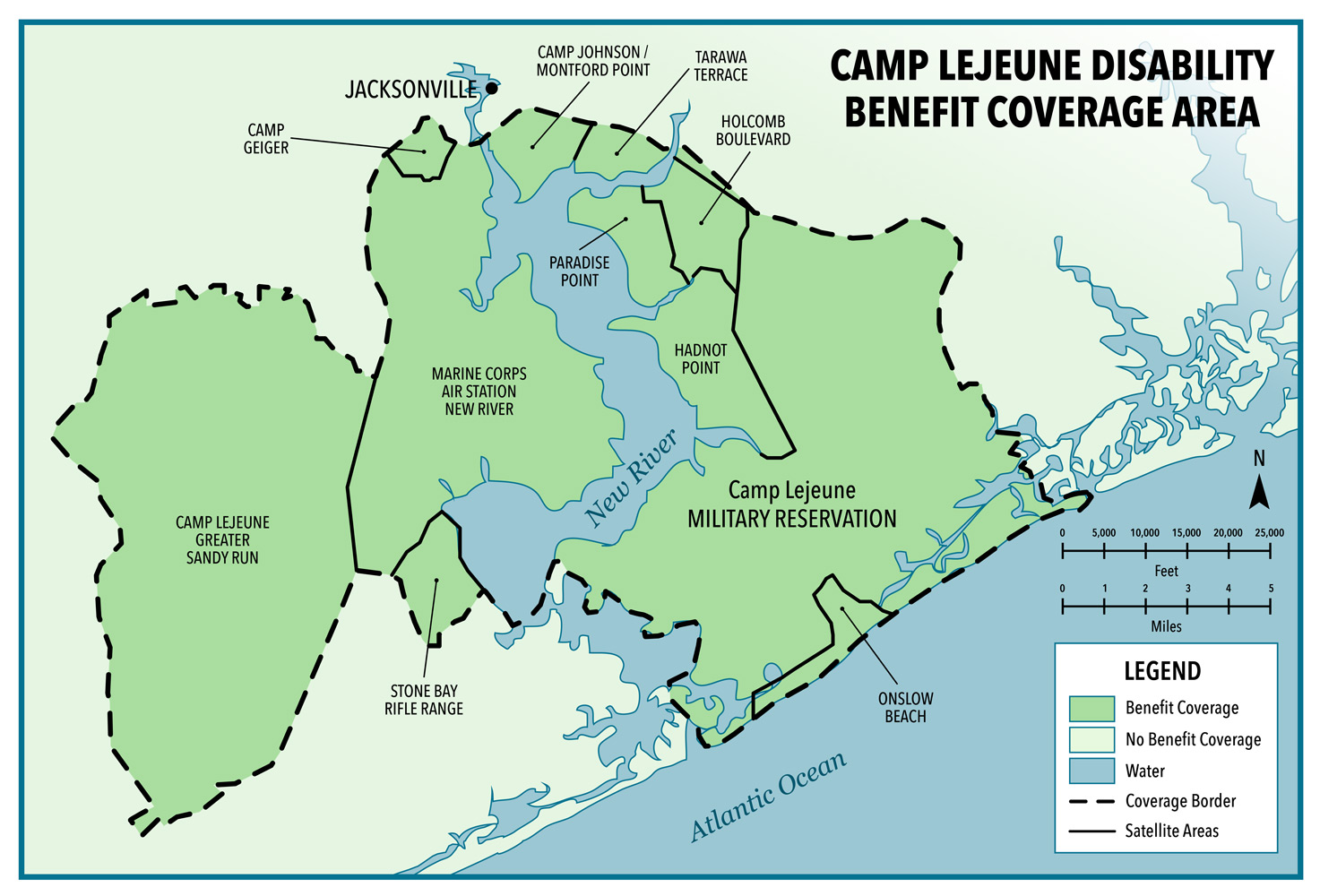Compensation
Exposure to Contaminated Drinking Water at Camp Lejeune
In the early 1980s contaminants were found in several wells that provided water at Camp Lejeune, N.C., The contaminants included the volatile organic compounds trichloroethylene (TCE), a metal degreaser, and perchloroethylene (PCE), a dry cleaning agent, and vinyl chloride, as well as benzene, and other compounds. It is estimated that the contaminants were in the water supply from the mid-1950’s until February 1985 when the wells were shut down.
There is evidence of an association between certain diseases and the contaminants found in the water supply at Camp Lejeune during the period of contamination.
Camp Lejeune presumptive diseases
As part of VA’s ongoing commitment to provide quality care to Veterans, the Department of Veterans Affairs has established a presumption of service connection for eight diseases associated with exposure to contaminants in the water supply at Camp Lejeune, N.C. Active duty, reserve, and National Guard members who served at Camp Lejeune or MCAS New River, N.C. for a minimum of 30 days (cumulative) from August 1, 1953, through December 31, 1987, may be eligible for disability benefits. The presumption rule was published on January 13, 2017, and became effective March 14, 2017.
The presumptive diseases are:
- Adult leukemia
- Aplastic anemia and other myelodysplastic syndromes
- Bladder cancer
- Kidney cancer
- Liver cancer
- Multiple myeloma
- Non-Hodgkin’s lymphoma, and
- Parkinson’s disease
Eligibility Requirements
To be eligible for benefits, you must:
- Be an active duty, reserve or National Guard member who was discharged under conditions other than dishonorable.
- Have served at Camp Lejeune for at least 30 days (cumulative), between August 1, 1953, and December 31, 1987.
- Have a current disease on the list of presumptive conditions related to Camp Lejeune.
Evidence Requirements
- Records that show you served at Camp Lejeune or MCAS New River for at least 30 days (cumulative), between August 1, 1953 and December 31, 1987, in an active duty, reserve, or National Guard capacity.
- The medical evidence must show you have a current disease on the list of presumptive conditions related to Camp Lejeune.
How To Apply for Disability Benefits
- Apply online using eBenefits. When you apply, do the following:
- Select "Environmental Hazard - Camp Lejeune" as a special issue.
- Include evidence of service at Camp Lejeune during the required timeframe.
- Provide medical evidence showing your diagnosis. OR
- Work with an accredited representative or agent OR
- Go to a VA regional office and have a VA employee assist you. You can find your regional office on our Facility Locator page.
For more information on how to apply and for tips on making sure your claim is ready to be processed by VA, visit our How to Apply page.
Camp Lejeune Healthcare Benefits
Health benefits or cost reimbursement for 15 conditions may be available for Veterans and family members who served on active duty or resided at Camp Lejeune for 30 days or more between August 1, 1953, and December 31, 1987. The Camp Lejeune Healthcare web page contains information on the conditions covered and application instructions.









